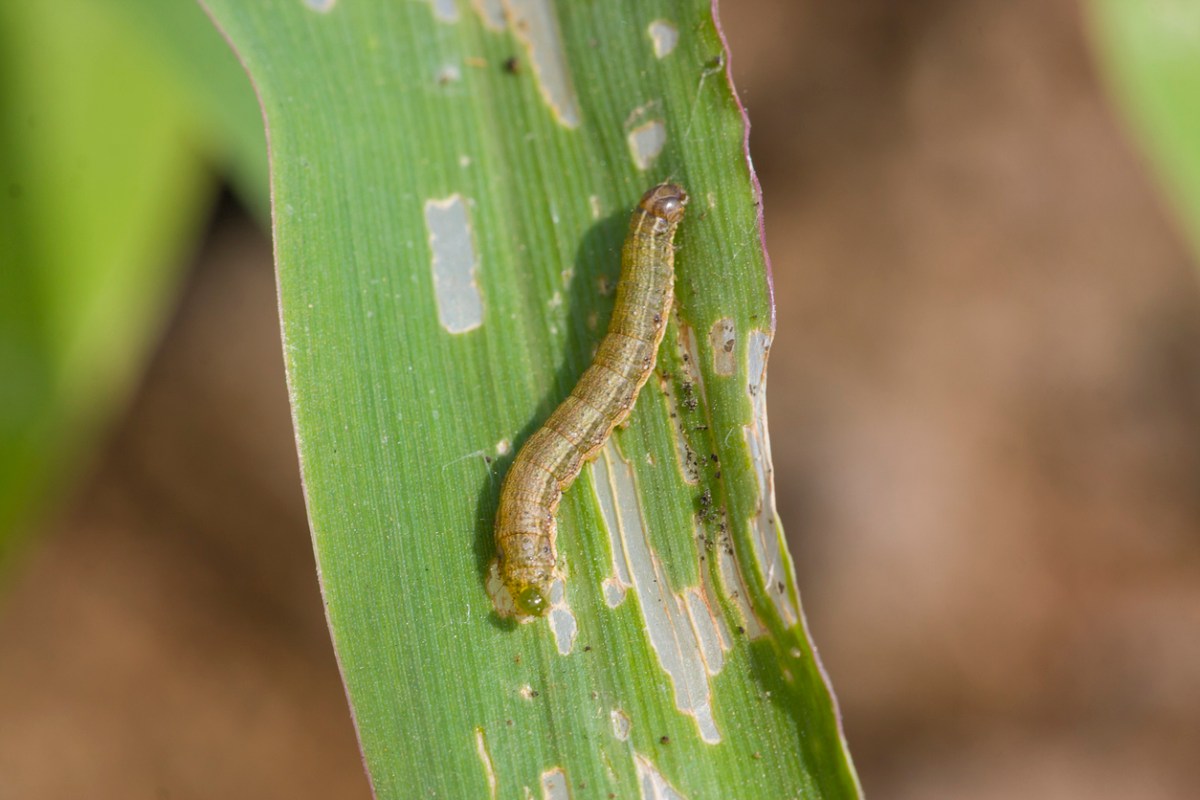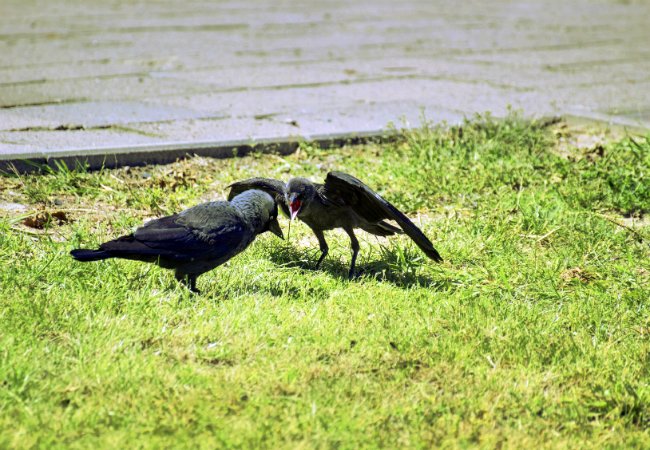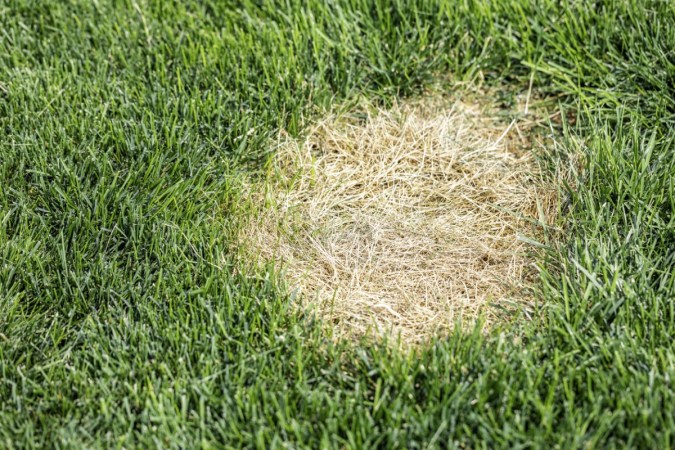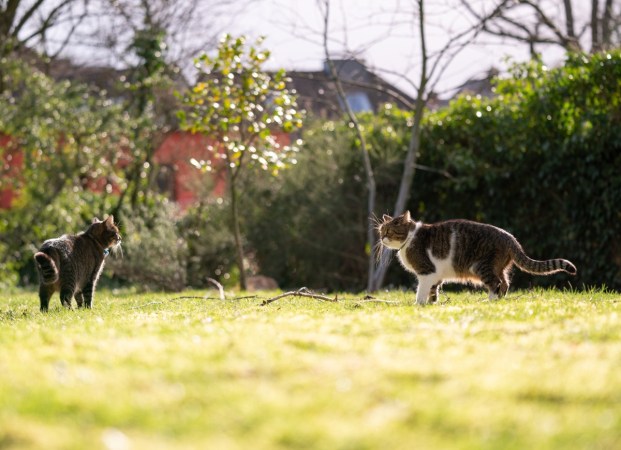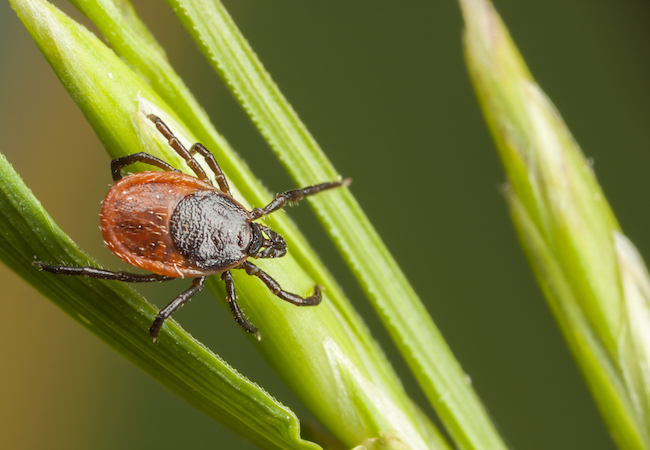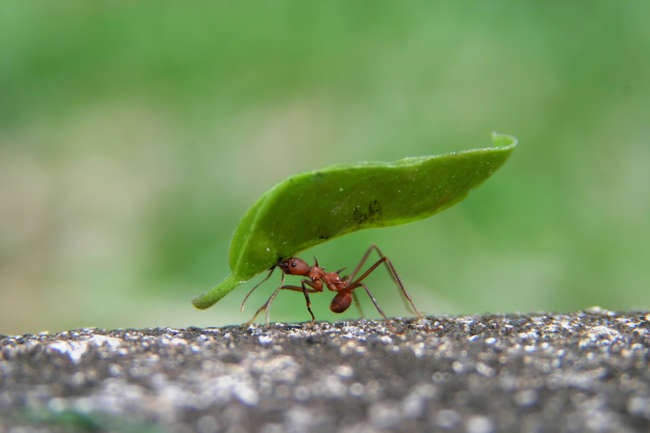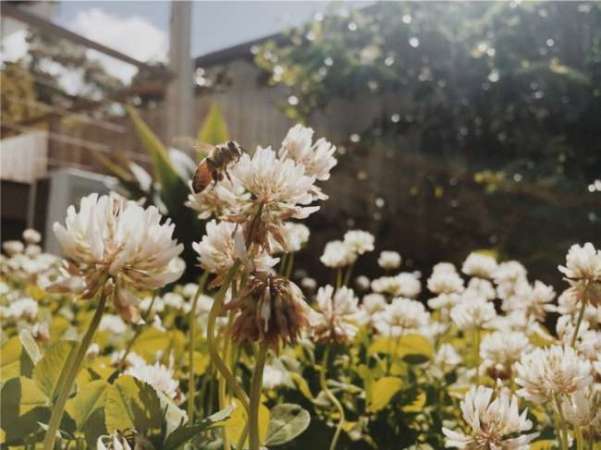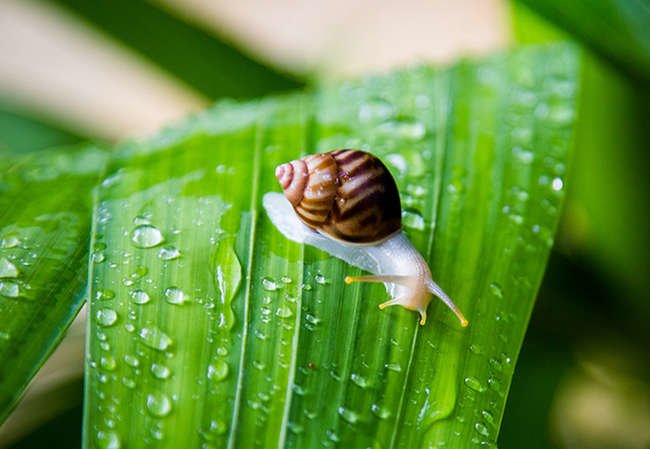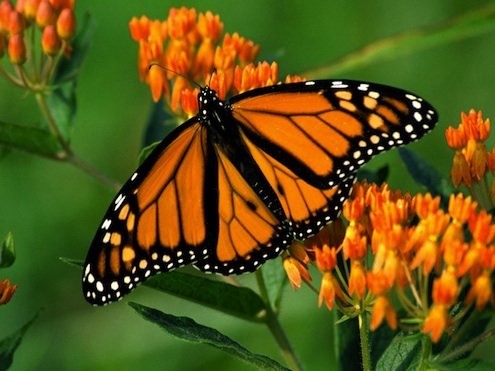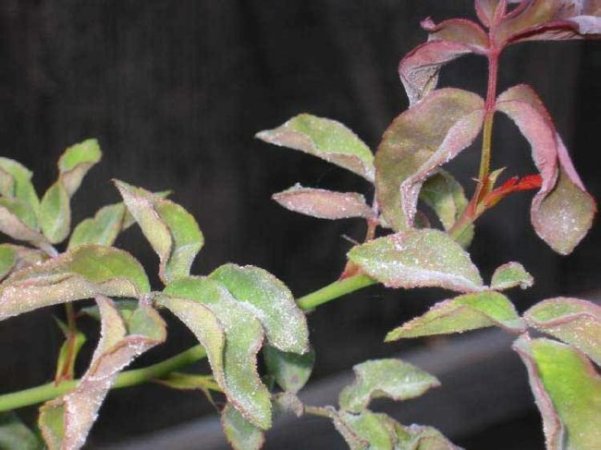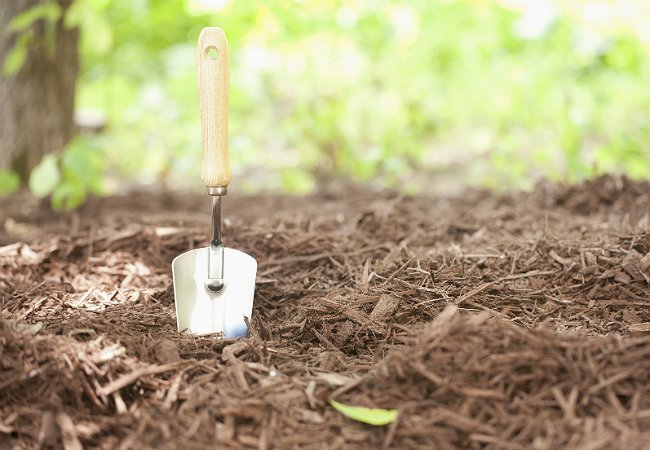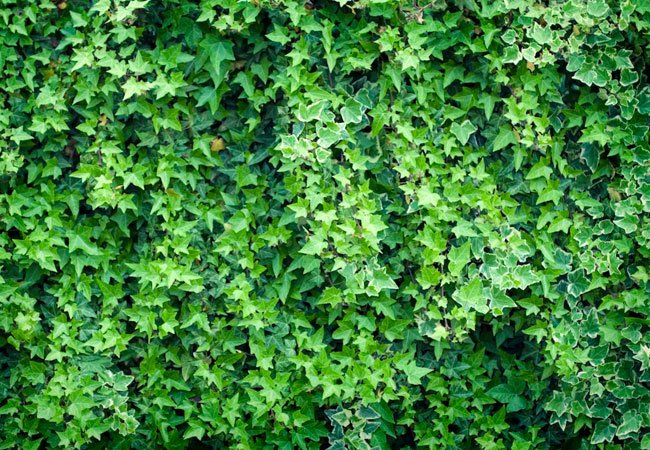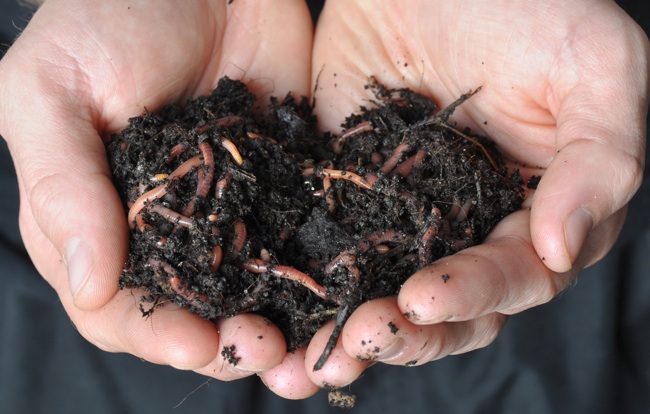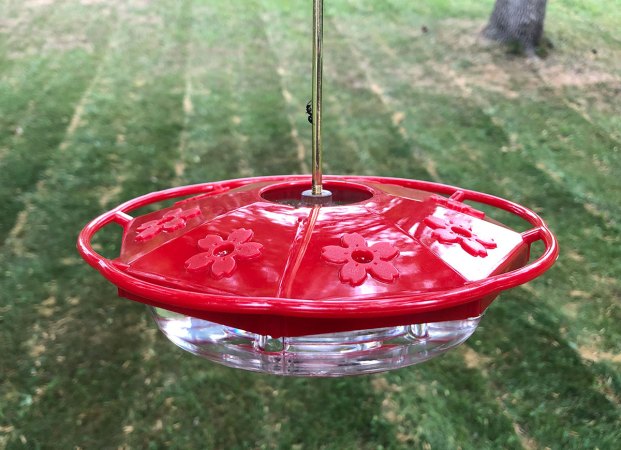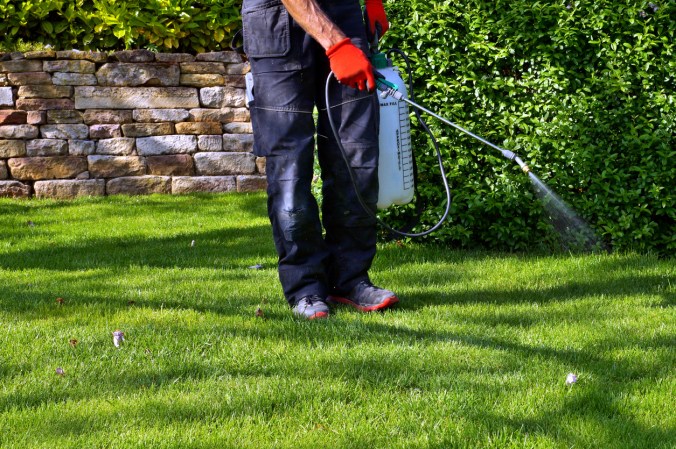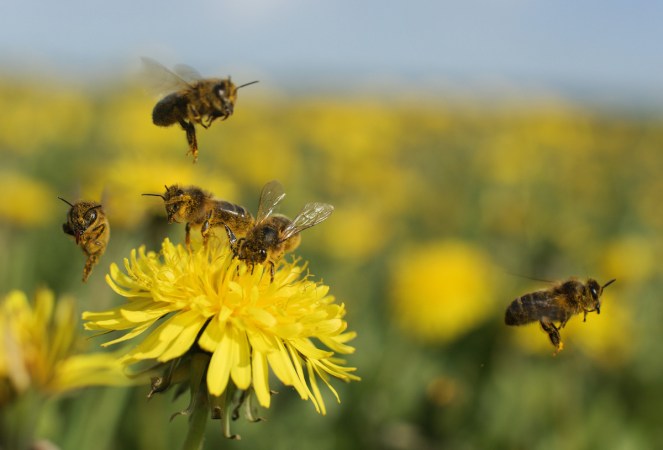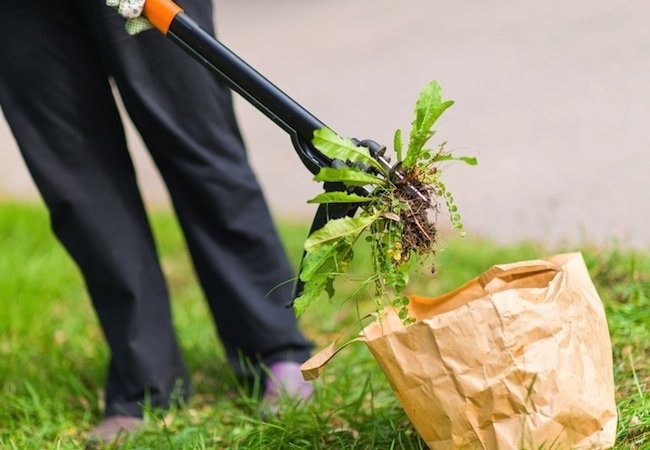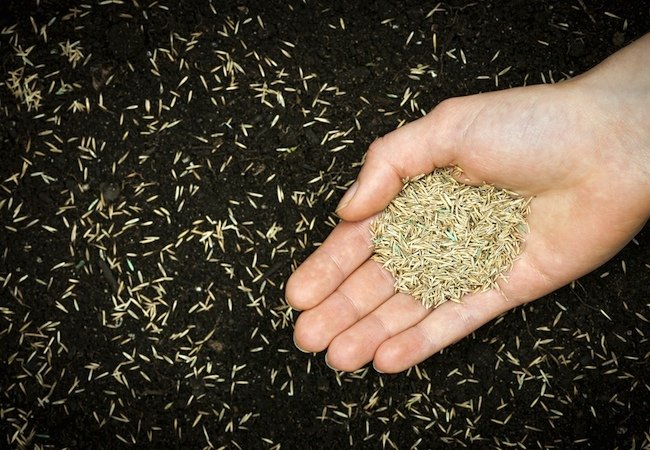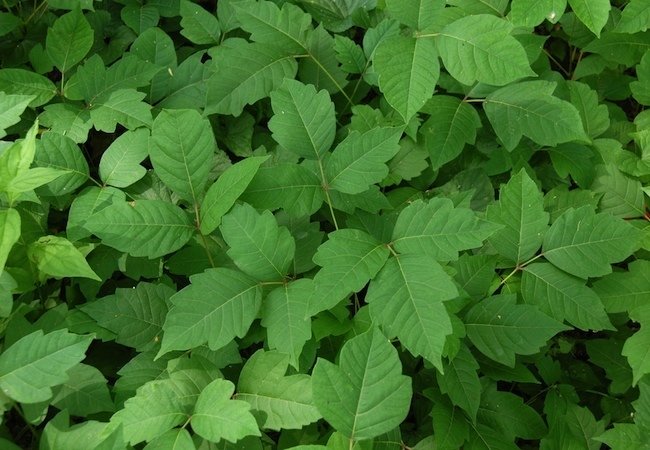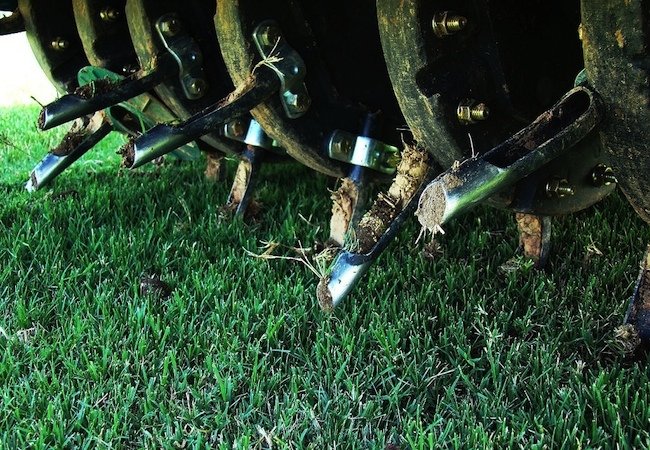We may earn revenue from the products available on this page and participate in affiliate programs. Learn More ›
An armyworm infestation can wreak havoc on your yard. These caterpillars have a reputation as destructive garden pests. They mainly chomp on grass, but also take a liking to vegetables, crops, and other plants. Although small, armyworms often appear in groups and are voracious eaters—left to their own devices, an infestation can ruin a lawn in a matter of days.
It’s best to identify and treat problems early to prevent damage to your yard or garden. Read on to learn how to get rid of armyworms and prevent these pests from nibbling on your precious plants.
Tools & Materials
Bobvila.com may earn a commission from purchases made through these links.
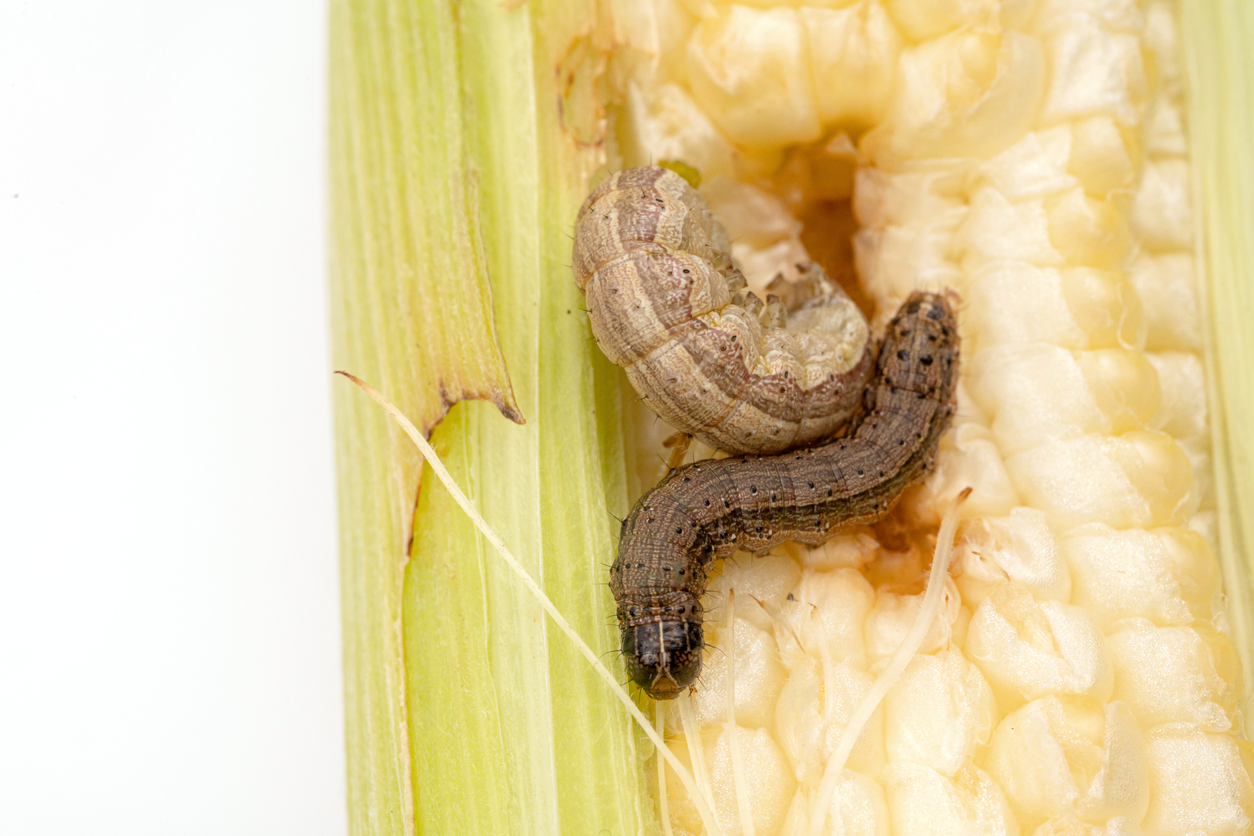
STEP 1: Identify armyworm larvae.
The armyworm larvae, or caterpillars, feed on lawns, gardens, and crops. They are green, brown, or black in color, and are most easily identified by the green, yellow, brown, or reddish stripes that span the length of their body. If you look closely, the front of their head also features a distinct, inverted “Y” mark. Their full-grown size is 1-1/2 to 2 inches long and they have very little fuzz.
Armyworm activity is most common in summer and early fall. The first sign of an armyworm problem is patches of brown grass. On further examination, you’ll notice the edges of the grass blades look chewed and ragged, or even sheared completely. If you’ve seen several armyworms or notice damage to your garden, it’s time to treat.
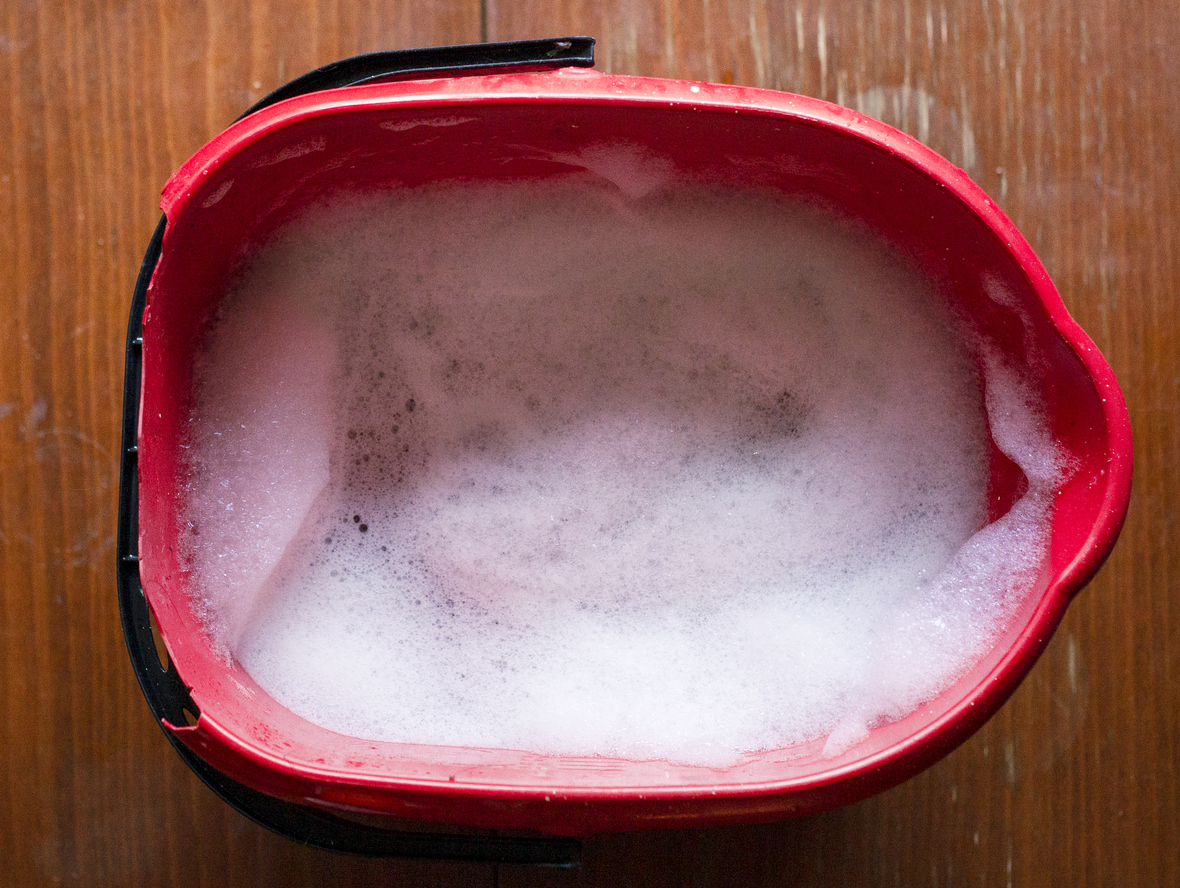
STEP 2: Remove armyworms from plants by hand and drop them into a bucket of soapy water.
Armyworms usually hide during the day, but if you see them, it’s best to get rid of them. Physically purging your lawn or garden might be enough to bring a limited invasion under control. Pick off the armyworm from the plant by hand and then drop it into a bucket of soapy water—liquid dish soap is perfectly fine. The soapy water solution will ensure the armyworms die.
If you don’t plan on treating with an insecticide, remove the affected plants and wash gardening tools to account for any leftover eggs. For larger infestations, consider using an insecticide; natural and effective options are available.
Related: 8 Pest-Control Myths You Shouldn’t Believe
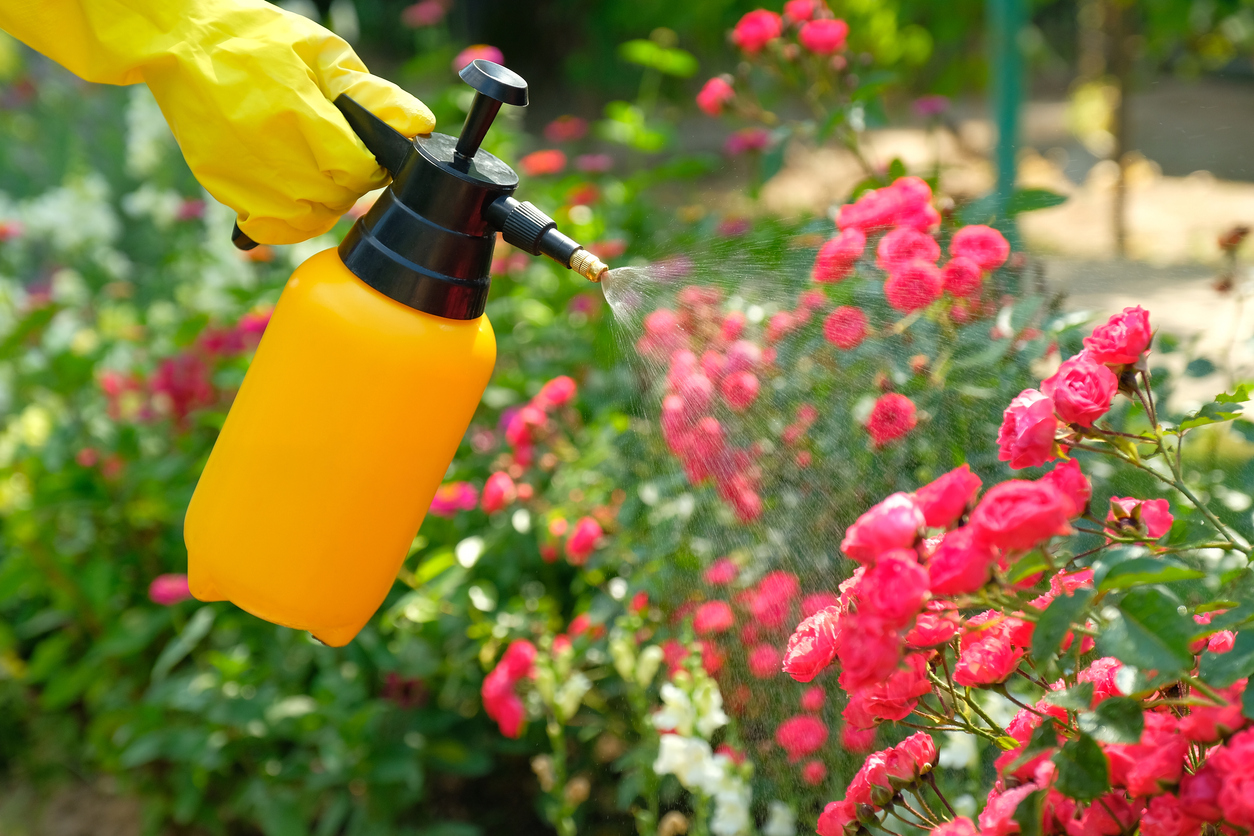
STEP 3: Spray infested plants with neem oil or other natural insecticide.
Since armyworms are surface feeders, a spray insecticide is an excellent choice. Chemical and granule pesticides also can be effective.
Regardless of the type you choose, it’s best to opt for a nontoxic armyworm insecticide that won’t harm beneficial insects. You’ll want natural armyworm predators around to keep future populations under control. Some common remedies include neem oil, bacillus thuringiensis, pyrethrin, and diatomaceous earth. Options like neem oil sprays are safe and effective against a wide variety of bugs and insects, including armyworms.
Related: 15 Natural Pest-Control Strategies for Your Home Landscape

STEP 4: Time treatments for early morning or late evening.
Armyworm larvae are most active during the early morning and late evening. Whether you’re physically plucking off the larvae or using an insecticide, it’s best to coincide treatments with their active feeding times.
Armyworms reproduce readily and your lawn can fall victim to multiple generations of armyworms in one year. For this reason, it’s important to check for signs of armyworms regularly and treat problems as they arise. An ounce of prevention, which usually just involves staying on top of lawn maintenance, can go a long way in preventing armyworms from returning.
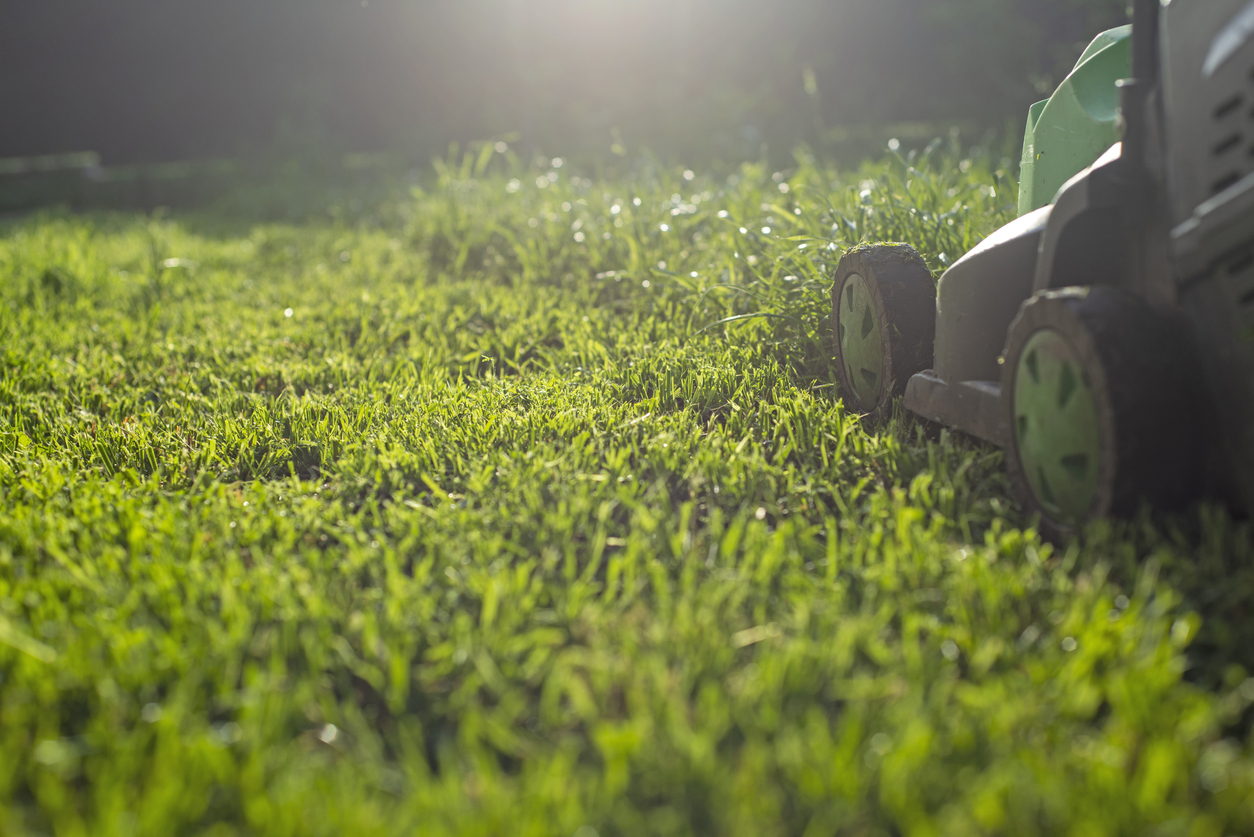
STEP 5: Keep the lawn mowed to a reasonable height and keep grassy weeds at bay.
In many areas, natural predators can help keep armyworms in check. Aim to make your garden a better environment for natural larvae predators, such as birds and beneficial insects like ground beetles, rove beetles, and ladybugs.
Long grass and grassy weeds can attract adult armyworms. A well-maintained garden creates a less attractive environment for the adult moths to lay their eggs. Keeping grasses short and removing fallen debris also exposes armyworm hiding spots, so natural predators can pick off existing bugs. Keeping a healthy yard will also help your grass or plants bounce back in the case of a minor armyworm infestation.
If you suspect armyworms as the cause of your garden woes, it’s important to identify and treat the problem quickly. Armyworms can lay devastation to a lawn or garden in a matter of days. At the first signs of brown patches and chewed plants, look for the small armyworm larvae, which are identifiable due to their green, yellow, brown, or reddish stripes that span their body length. Then, it’s time to consider treating your yard. With a few simple treatment steps and regular yard maintenance, you can keep armyworms at bay and help your garden flourish.
Related: 14 Mowing Mistakes Everyone Makes

